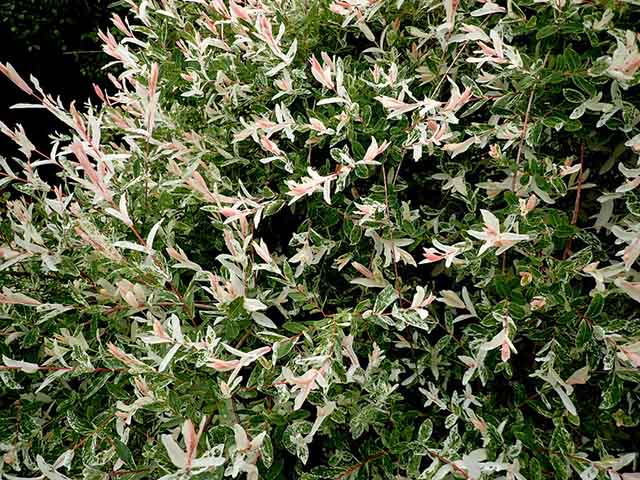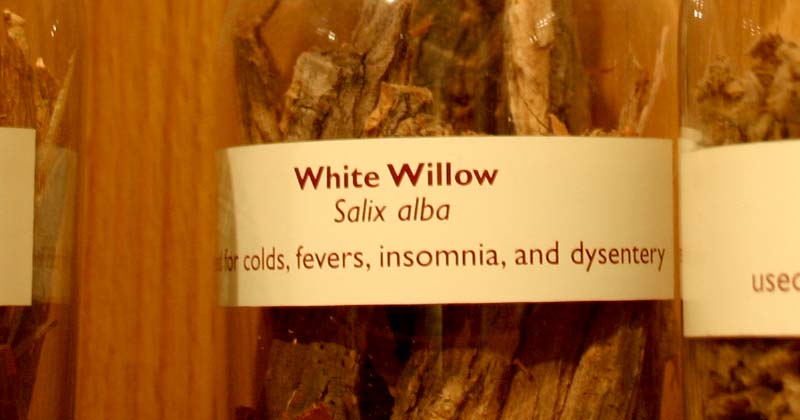Willow bark is well known for its pain relieving and anti-inflammatory benefits. It even gets rid of acne when applied to the skin. On top of all the benefits, willow bark is actually incredibly easy to harvest yourself – meaning that you get free medicine from nature. Here are instructions on how to make your own willow bark medicinal tea or extract.
Also read: Willow bark benefits and dosage
When to Harvest Willow Bark?
Willow bark is easiest to harvest from very young branches. It is also easier to harvest the bark in spring when the bark is softer. However, willow bark has the most salicin content in fall. So, while you can harvest willow bark at any time of the year, you’ll get the most medicinal benefits if you harvest it in the fall. (1)
Which type of willow trees are best medicinally?
There are over 500 species of willow trees. Of these, white willow is the one most often used for making medicinal teas and extracts. However, white willow is not the most potent species when it comes to salicin content. For example, purple willow has approximately 4x as much salicin as white willow. European violet willow has even more salicin.
The species of willow with the most salicin are:
- Salix daphnoides (European violet willow)
- Salix acutifolia (Siberian violet-willow )
- Salix integra (dappled willow or “Hakuro-Nishiki”)
- Salix purpurea (purple willow or purple osier)
- Salix caspica (Caspian willow)
- Salix rigida (Mackenzie’s willow or heart-leaf willow)
Most of these species aren’t commonly found in North America, thus why Sailx alba (white willow) remains the most common type of willow bark for medicinal use despite having just a fraction of the salicin content. The dried willow bark by Frontier is one of the few brands to include S. daphnoides and S. purpurea in their product. (2, 3, 4, 5)

How to Harvest Willow Bark
1. Locate willow growing in an uncontaminated area
Willow trees can absorb heavy metals, which then accumulate in the tree. Thus, it is important you find a willow growing in an uncontaminated area. Avoid willows which are growing near large-scale agriculture or industrial sites. (6)
2. Test the Bark
Once you find a suitable willow tree, shave off a bit of bark from a small branch. Smell and taste it. The bark should have a minty or wintergreen smell. The taste should be terribly bitter and slightly acidic.
3. Use Thin Branches
You can harvest bark from any part of the willow tree. However, it’s easiest to harvest bark from thin new branches. Avoid harvesting bark from the trunk of a willow tree as this can damage the tree or even kill it. Seriously – removing bark may allow pathogens to enter the tree and kill it!
4. Strip Bark with a Knife
- If you are harvesting from a large branch or the trunk: You only want the inner bark of the willow tree. You’ll first need to remove the outer bark with your knife. Discard this. Then use the knife to peel strips of the inner bark.
- If harvesting from small branches: If the branch is small enough, the outer bark will be very thin. There’s no need to peel this away. You can just harvest all of the bark and use it.
Drying Willow Bark for Tea
If you want to make willow bark tea, you’ll need to dry the willow bark first. Salicin is fairly stable, so you don’t have to worry too much about it during the drying process. However, the antioxidants in the bark are likely heat sensitive, so try to keep the drying temperature as low as possible.
To dry the willow bark, you can use a food dehydrate at a low setting, your oven at a very low heat, or just leave it outside in a warm, well-ventilated, low-humidity place to dry. (7)
After you dry the willow bark, you’ll want to break it into smaller pieces. This increases surface area so more nutrients come out when you make tea.
Willow Bark Powder
Willow bark tea tastes disgusting. If you can’t stomach the tea, you can grind the dried bark into a powder instead. You can then add the powder to smoothies. Even like this, the taste is still gross. Another option is to put the dried powder into empty capsules and swallow them. It’s slightly annoying to fill the capsules but is definitely more convenient to take willow bark this way.
Making Willow Bark Tincture
Because willow bark tea is so gross, it is much easier to take it as a tincture. The only downside is that you’ve got to wait 1 month for the tincture to be ready.
To make tincture:
- Break freshly-cut willow bark into small pieces (about 1 inch long).
- Pack a clean jar about 2/3 full with the willow bark pieces.
- Cover the willow bark with vodka. You can also use glycerin to make a non-alcoholic extract.
- Put a lid on the jar and keep it in a cool, dark place.
- Shake the jar occasionally.
- After about 1 month, strain the liquid.
- Keep the liquid in a dark-colored glass with a tight lid.
- Don’t forget to label the glass with the date and name of your tincture.
- As with all tinctures, keep it in a cool, dark place.

